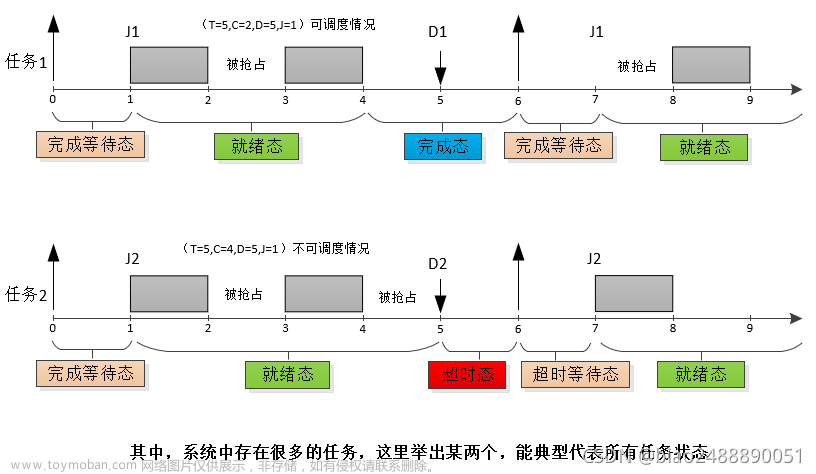Cloudsim和智能算法结合有什么优势?
智能算法和CloudSim结合有以下几个优势:
- 提高模拟精度:CloudSim本身是一个基于事件驱动的离散事件仿真框架,采用了模拟的方式来模拟云计算中的各个组成部分,但无法保证模拟结果的精确性。随着智能算法的应用,可以较为精确地模拟出更多实际情况,提高模拟结果的准确性。
- 优化调度策略:智能算法在 CloudSim 中的应用可以优化资源的调度策略,例如,将粒子群优化算法(Particle Swarm Optimization,PSO)应用于虚拟机调度中,可以通过动态地调整虚拟机之间的分配来实现更高效的调度,从而达到扩大计算资源利用率的目的。
- 降低成本:使用 CloudSim 配合智能算法进行仿真和优化,可以帮助用户根据实际的需求,优化计算资源使用,提高资源利用率并在一定程度上降低成本。
- 突破局限性:CloudSim的功能和特性可以大大扩展,通过增加智能算法,CloudSim的使用和应用场景也将随之扩展,帮助用户更好地探索云计算环境的各种可能性。
PSO在云计算调度中的作用?
粒子群优化算法(PSO)是一种智能优化算法,也是一种元启发式算法,最初是由Eberhart和Kennedy提出的,其模拟了鸟群捕食行为,通过一定的搜索策略,使得多个粒子在多维搜索空间中寻找最优解。
在云计算调度中,PSO算法可以用于优化虚拟机的调度策略。云计算环境中存在着多种类型的虚拟机资源,每种资源都有其特定的限制和使用成本模型。考虑到虚拟机的计算能力和使用成本等因素,云计算系统需要合理地分配虚拟机资源,以最大化资源利用率和系统效益。
使用PSO算法可以有效地优化虚拟机的调度策略。PSO算法可以在优化目标函数中设置多个参数以权衡资源利用率和系统效益。例如,在优化目标函数中,可以添加CPU利用率和内存利用率等参数,并在优化过程中动态调整各参数的权重以实现最优解的搜索。
PSO算法在云计算调度中的主要作用是优化资源的分配和虚拟机调度策略,从而提高云计算系统的资源利用率和系统效益。
这是一个使用 PSO(粒子群优化)算法调度任务的例子代码。主要包含以下步骤:
- 初始化 CloudSim 包并设置仿真参数。
- 创建数据中心。
- 创建代理。
- 开始仿真。
- 打印仿真结果。
具体实现细节和注释如下:
- 初始化 CloudSim 包并设置仿真参数。
int num_user = 1; // number of cloud users
Calendar calendar = Calendar.getInstance();
boolean trace_flag = false; // mean trace events
// Initialize the CloudSim library
CloudSim.init(num_user, calendar, trace_flag);
- 创建数据中心。
// Here are the steps needed to create a PowerDatacenter:
// 1. We need to create a list to store our machine
List<NetworkHost> hostList = new ArrayList<NetworkHost>();
// 2. A Machine contains one or more PEs or CPUs/Cores.
// In this example, it will have only one core.
List<Pe> peList = new ArrayList<Pe>();
int mips = 1000;
// 3. Create PEs and add these into a list.
peList.add(new Pe(0, new PeProvisionerSimple(mips)));
// need to store Pe id and MIPS Rating
// 4. Create Host with its id and list of PEs and add them to the list
// of machines
int ram = 2048; // host memory (MB)
long storage = 1000000; // host storage
int bw = 10000;
int hostNumber = 4;
// Add the Hosts created above to HostList.
for (int index = 0; index < hostNumber; index++) {
hostList.add(new NetworkHost(index, new RamProvisionerSimple(ram), new
BwProvisionerSimple(bw), storage, peList, new VmSchedulerTimeShared(peList)));
}
// Create Internal Datacenter network
CreateNetwork(4, datacenter);
// Create a DatacenterCharacteristics object and pass the above created hosts to it.
DatacenterCharacteristics characteristics = new DatacenterCharacteristics(arch, os,
vmm, hostList, time_zone, cost, costPerMem, costPerStorage, costPerBw);
// 6. Finally, we need to create a PowerDatacenter object.
NetworkDatacenter datacenter = null;
try {
datacenter = new NetworkDatacenter(name, characteristics, new
NetworkVmAllocationPolicy(hostList), storageList, 0);
} catch (Exception e) {
e.printStackTrace();
}
- 创建代理。
private static NetDatacenterBroker createBroker() {
NetDatacenterBroker broker = null;
try {
broker = new NetDatacenterBroker("Broker");
} catch (Exception e) {
e.printStackTrace();
return null;
}
return broker;
}
- 开始仿真。
// Start the CloudSim simulation
CloudSim.startSimulation();
// Print Cloudlet result
List<Cloudlet> newList = broker.getCloudletReceivedList();
printCloudletList(newList);
// Stop the CloudSim simulation
CloudSim.stopSimulation();
- 打印仿真结果。
private static void printCloudletList(List<Cloudlet> list) {
int size = list.size();
Cloudlet cloudlet;
String indent = " ";
Log.printLine();
Log.printLine("========== OUTPUT ==========");
Log.printLine("Cloudlet ID" + indent + "STATUS" + indent + "Data center ID" +
indent + "VM ID" + indent + "Time" + indent + "Start Time" + indent +
"Finish Time");
for (int i = 0; i < size; i++) {
cloudlet = list.get(i);
Log.print(indent + cloudlet.getCloudletId() + indent + indent);
if (cloudlet.getCloudletStatus() == Cloudlet.SUCCESS) {
Log.print("SUCCESS");
DecimalFormat dft = new DecimalFormat("###.##");
Log.printLine(indent + indent + cloudlet.getResourceId() + indent +
indent + indent + cloudlet.getVmId() + indent + indent +
dft.format(cloudlet.getActualCPUTime()) + indent + indent +
dft.format(cloudlet.getExecStartTime()) + indent + indent +
dft.format(cloudlet.getFinishTime()));
}
}
}
Cloudsim中的executioncost?
CloudSim中的ExecutionCost是指在云环境中完成一个任务所需要的成本,包括计算资源的消耗、网络带宽的消耗等。这个成本通常会影响到云服务提供商的利润和用户的支付。文章来源:https://www.toymoban.com/news/detail-833405.html
当一个任务被分配给一台虚拟机时,ExecutionCost通常会与任务在虚拟机上执行的时间和虚拟机的使用费用直接相关。因此,在进行云计算调度时,ExecutionCost经常被视为一项关键的成本指标,而调度算法的目标就是尽可能地降低ExecutionCost,以实现高效的资源利用和用户满意度的提高。文章来源地址https://www.toymoban.com/news/detail-833405.html
到了这里,关于Cloudsim和算法的文章就介绍完了。如果您还想了解更多内容,请在右上角搜索TOY模板网以前的文章或继续浏览下面的相关文章,希望大家以后多多支持TOY模板网!








